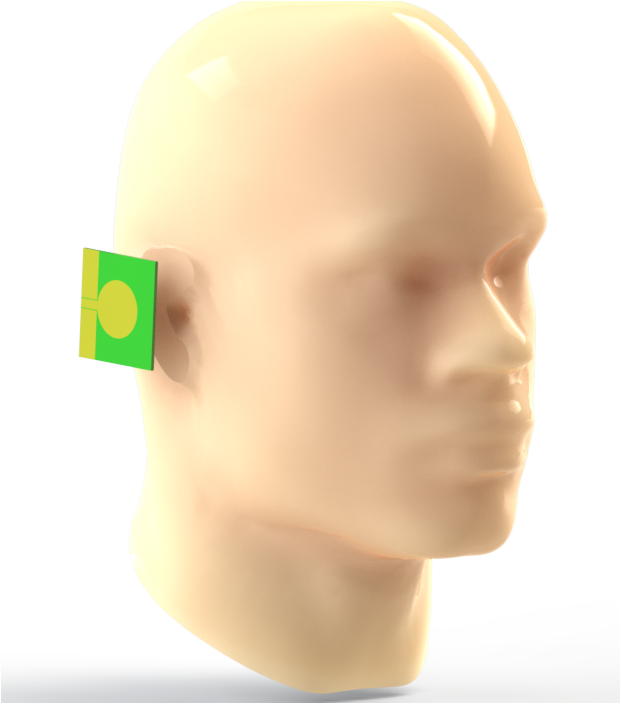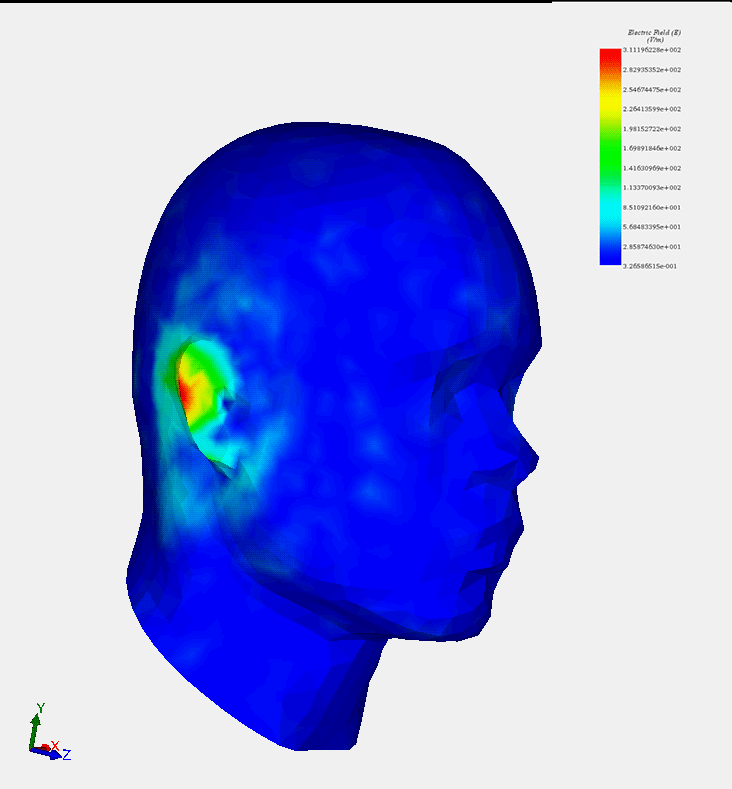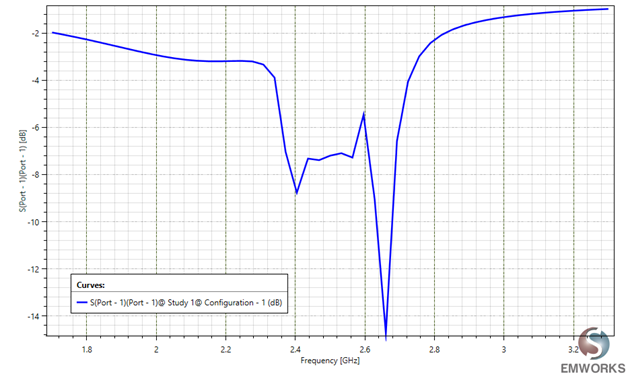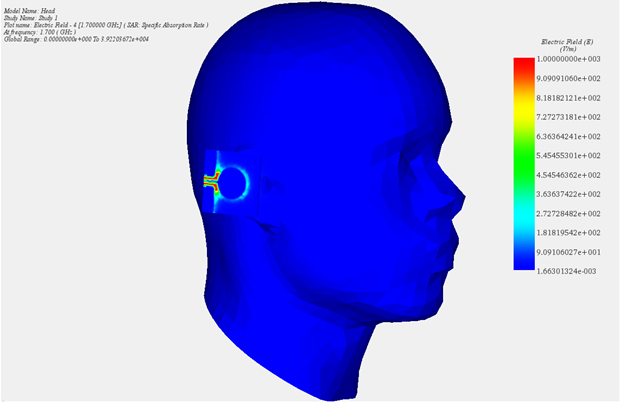Specific Absorption Rate
Specific Absorption Rate (SAR) serves as a vital metric for estimating the energy absorbed by the human body when exposed to electromagnetic fields. Accurately determining SAR values has grown increasingly important, especially with the widespread use of cellular phones in recent years. Due to the inherent challenges of measuring SAR in vivo, SAR values are often derived from electric field data. Given the well-established risks associated with prolonged exposure to microwave signals, having a reliable tool to calculate SAR before designing cellular devices is paramount.
In this study, we employ HFWorks to simulate the interaction between a 3G antenna and a computer-modeled human head. Our analysis encompasses Specific Absorption Rate (SAR), electric field distribution, and various other pertinent parameters.

Simulation
This simulation aims to provide an approximate assessment of the absorption of 3G-generated electromagnetic fields by the human body, with a specific focus on the human brain. HFWorks calculates the Specific Absorption Rate (SAR) in antenna simulations, making it a valuable tool for evaluating human exposure to radiation sources. In this application, we investigate the effects of 3G or UMTS (2.66 GHz) signals on a human head.
Load/ Restraint
Creating an accurate numerical model of the human head is a crucial task in this study. It involves defining specific materials to approximate human body properties based on measurements and estimations. We have the flexibility to select radiation surfaces from the defined head model, keeping in mind that these surfaces will be relevant for post-study radiation plots. Accurately modeling the human head presents a complex challenge, as it requires analyzing a wide range of factors such as operational frequency, antenna power, device-human head positioning, device design, head size and shape, tissue distribution within the head, and the electrical properties of these tissues.
Results
In this simulation at the frequency of 2.66 GHz (UMTS), the primary focus is on assessing the impact of the antenna on the modeled human head rather than the antenna's radiation patterns. Nevertheless, accurately computing the radiation patterns is essential for the success of the simulation, even if they are not the primary outcome of interest. This ensures that the antenna's behavior is properly accounted for in the assessment of its impact on the human head.

Figure 2 - 3D plot of the electric field
To enhance the clarity of the 3D electric field plot, it's important to choose an appropriate chart scale by defining minimum and maximum values. This adjustment can help provide a more accurate representation of the field distribution. Additionally, animating the 3D plot by varying its phase can reveal how changes in the omega T phase affect the field distribution.
The S11 coefficient figure depicted below demonstrates that the antenna in question is compatible with and responsive to the UMTS frequency band, indicating its suitability for this application?.

Specific Absorption Rate
The calculation of Specific Absorption Rate (SAR) serves the purpose of experimentally assessing the compliance of portable and mobile devices with local absorption guidelines. The correlation between the root-mean-square (r.m.s.) value of the electric field intensity of the body (E) and SAR is represented by the following formula:
![]()
Where 's' represents the conductivity [S/m] of various human tissues and 'ro' is the density [kg/m³] of human tissue.

Conclusion
This application note addresses the critical evaluation of Specific Absorption Rate (SAR), a key metric for gauging the energy absorbed by the human body when exposed to electromagnetic fields, particularly from cellular devices. With the pervasive use of mobile phones, accurately determining SAR values has become crucial to ensure user safety. The study utilizes HFWorks for simulating the interaction between a 3G antenna and a computer-modeled human head, focusing on SAR values, electric field distribution, and other relevant parameters. The simulation at 2.66 GHz (UMTS frequency) aims to approximate the electromagnetic field absorption by the human brain, emphasizing the necessity of accurate SAR calculations. By creating a detailed numerical model of the human head, and considering variables like tissue properties and device positioning, the research underlines the importance of reliable SAR assessment tools. The findings not only highlight the antenna's compatibility with UMTS frequencies but also underscore the significance of adhering to local absorption guidelines, ensuring that mobile devices are safe for human use.
References
[1] Specific Absorption Rate (SAR): Distribution in the Human Head at Global System Mobil (GSM) Frequencies. Seddik Bri, Samira Kassimi, Mohamed Habibi, Ahmed Manouni. 2011



